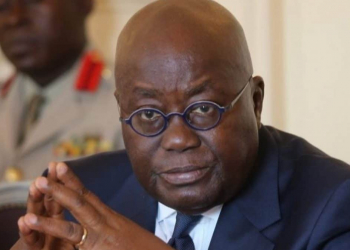Bankers are increasingly becoming amenable to agriculture financing, which they have long avoided for its unduly risky nature, on the back of recent attempts by government to inject confidence into the sector.
The central bank, in October 2016, announced a GH¢100 million guarantee to banks that lend to the sector, whilst the Akufo-Addo administration has given indication it is going big on agriculture, with its flagship Planting for Food and Jobs Programme that seeks to create some 750,000 jobs by its second year of implementation.
The banks have found confidence in government’s decision to take a lead role in bolstering agricultural productivity, and have given indication they are ready to support.
In interviews with the B&FT, some bankers noted that with the guarantees and other forms of support government is giving, banks are willing to allocate resources.
Managing Director of Royal Bank, Osei Asafo-Adjei, noted that banks are finally looking at agric differently because the government is leading the conversation and is acting, including guaranteeing loans, subsidising inputs and training experts to support farmers across the country.
“It makes it easier for a bank to lend knowing that its loans are guaranteed. Agric in the country is high risk due to over-reliance on rainfall, and the issue of post harvest losses due to the lack of capacity for adequate storage,” he said.
Mr. Asafo-Adjei noted that his bank has already made contact with the Ministry of Agriculture and has submitted an application to be part of the scheme.
“What we are going to do, initially, is to help with the distribution of inputs because government is going to supply inputs for the programme through the banks. We are also going to identify and support agricultural projects that are viable and bankable with loans,” Mr. Asafo-Adjei said.
Already, the Agricultural Development Bank (ADB) has announced a total of GH¢450 million to, among other initiatives, support the government’s ‘Planting for Food and Jobs’ programme. Before this programme, the bank supported agric with only GH¢500million between 2010 to 2015.
The ADB’s Managing Director, Daniel Asiedu, has said GH¢150million is directly going to support the Planting for Food and Jobs programme, with the remaining GH¢300 million serving as credit to support various viable projects in the agricultural value chain for the 2017 financial year.
On his part, Francois Marchal, Deputy Managing Director of Societe Generale, lauded government for finally providing an avenue for banks to comfortably lend to agriculture and develop a sector that has seen struggling whilst the country imports tonnes of food.
“We really welcome the Planting for Foods and Jobs approach, and utilising the value chain approach will help the farmers because we have to structure the value chain around agric in order to help the farmers.
For banks, it is true that going to the individual farmer directly is truly risky and secondly, we do not have the presence on the ground throughout the country to be able to engage one on one with the farmers,” he added, in support of the harmonised approach.
Societe Generale, he said, already supports agribusinesses through schemes promoted by the United States Agency for International Development (USAID) and the International Finance Corporation (IFC) and other development partners.
The bank, he said, is set to increase its investment in agriculture from less than US$20million per annum to almost US$30million in 2017 through the various schemes that are on offer.
Under the government’s Planting for Food and Jobs Programme, which was launched in April, 2017 and covers soya, rice, maize, sorghum and vegetables, farmers in all 216 districts that register must pay 50percent of all input costs,whilst the government provides the other half.
Financial institutions, including universal banks, finance houses, savings and loans companies, rural banks and microfinance companies, have been designated to receive the funds from farmers and issue receipts to the farmers, who then use the receipts to access the inputs.
The programme is expected to cost the government GH¢560 million and generate GH¢1.3 billion gross revenue for the 200,000 targeted farmers in its first-year whilst generating 750,000 jobs.
The agricultural sector saw a decline in growth from 7.4percent in 2008 to 0.8percent in 2011 before recovering slightly to 2.3percent and currently stands at 3.6percent.
The crops sub-sector, which engages most of the 4.5million farmers in the country, recorded growth of only 5.7percent in 2014, and fell to 2percent in 2015, before recovering slightly to 3.3percent in 2016.
Government projects the sector to grow by 3.5 percent in 2017, underpinned by the continued recovery of the crops subsector, with projected increases in the production of rice, maize and the tubers.
The sector is projected to grow by 4percent and 4.2percent in 2018 and 2019 respectively, thereby attaining an average growth rate of 3.9 percent for 2017-2019.
Planned expenditure for agriculture in 2016 was GH¢355.14 million, whilst actual expenditure by the end of December, 2016, was GH¢181.29 million.
For 2017, a total of GH¢450.33 million has been budgeted, out of which GH¢421.52 million, representing 93.60percent, will be spent on the Fertilizer Subsidy programme and the Agricultural Mechanisation Service Centres, among others.
Join GhanaStar.com to receive daily email alerts of breaking news in Ghana. GhanaStar.com is your source for all Ghana News. Get the latest Ghana news, breaking news, sports, politics, entertainment and more about Ghana, Africa and beyond.


